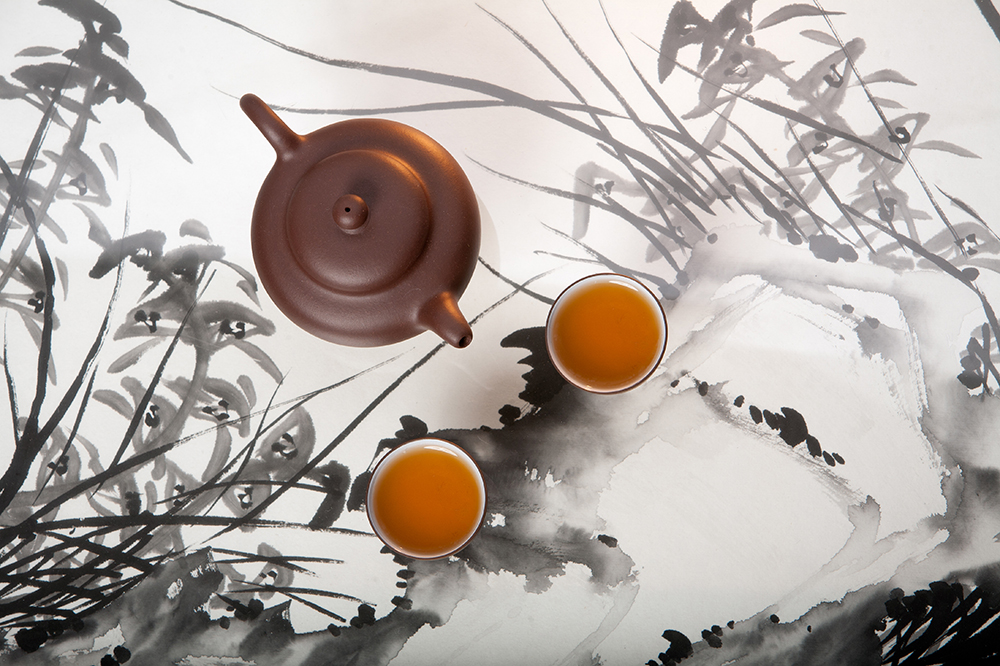
Martin Goodson
The Most Important Thing is Vitality
Interview with calligrapher – Michiko Imai
Japanese calligrapher Michiko Imai explains how to apply 'The Way of Zen' to all your creative endeavors.
 ©
© shutterstock
In Japanese, the term used for the practice of calligraphy is ‘Shodou/Shodo’ which translates as ‘The Way of writing’.
This term ‘dou/do’ is perhaps more familiar to Westerners in terms like ‘judo’ and ‘bushido’; and forms a raft of practices that range from the tea ceremony to martial arts.
In this interview with Michiko, she explaines that this term (dou/do), can also be understood as a journey. In explaining this term she refers to the second line of the famous verse ascribed to Bodhidharma
‘Not dependent on words and phrases.’
“There are a number of ways to research this subject. For instance, one could find information in books, the internet, on video and other forms of media. And although this does help to better understand the subject, it is one thing to read about this subject, and another to be able to perform and practice it. Understanding DOU, is a lifelong learning journey. “
The emphasis is on participating in the ‘dou/do’ rather than just in-the-head-learning that can often dominate Western forms of education.
“Hold your brush every day, and your hand will figure it out”
Michiko’s instruction to her students reminded me of my own teacher Ven. Myokyo-ni, who replied to one student’s uncertainty about whether or not he was ‘doing meditation right by’ saying “Just do whatever you think it is and it will go right – but only if you put in the effort!”
It seems central to the term ‘dou/do’ that the body must be taken into it otherwise it will not work. It also requires persistence and overcoming the fear of ‘getting it wrong’ and allowing oneself to fail. This is all part of the journey.
Michiko explaines how she was taught by her teachers:
“I started to studying calligraphy when I was just 4 years old. My teacher always said “Just Practice” She sometimes held my brush with me and we made lines together. I felt her technique -friction of the brush and paper, how to turn my brush, and the amount of pressure. I tried to feel the same feeling by myself.”
“The most important thing is vitality.”
The great Zen Master Hakuin once said that if you wish to know the taste of seawater then all you need to do is to walk straight from your front door, carry on until you arrive at the ocean (Japan being an island), dip your finger in it and allow a few drops to fall on to your tongue. At that instant you will know the taste of the seven oceans.
In this way, words and instructions point towards the living experience of the ‘do’-ing.
Michiko’s own persistence in following her older brother to his calligraphy classes, eventually paid off. She described how the teacher allowed her to try it even though she was still two years too young to begin the class.
She remembered from that early age the black characters on the white paper and the smell of the ink. She remembers too, the simplicity of the natural beauty and the depth conveyed by the work.
https://www.youtube.com/watch?v=oBmyBSPZX3A
Calligraphy as an art form arose in China and arrived in Japan via Korea around 600 C.E. Calligraphy today in Japan still uses the various scripts developed in China from the strict ‘Kaisho’ to the very cursive ‘Sousho’.
The work is brushed onto paper or silk, backed to stiffen it for mounting and edged with brocade. The work is turned into a hanging scroll by adding rollers to the top and bottom for display. Additional pieces of brocade are hung from the top roller and may be used to secure the scroll when rolled up.
Michiko was accepted into Japan’s Calligraphy Society (Tenshin Kai), at the age of 25; in 1998. She became a Master Calligrapher upon being awarded the prestigious Calligraphy Society (Cho-ko kai) guild and received her licence to teach calligraphy teachers.
Her work has been displayed at the Tokyo Metropolitan Art Museum, and other museums in Osaka, Kyoto and in her home city of Nara.
In 2008 she moved to the United States settling in Swampscott Massachusetts where she runs a studio and teaches others. She has both exhibited and demonstrated her work at a number of venues in the US including Museum of Fine Arts in Boston and at Harvard University.
I asked Michiko about the common difficulties that people have when beginning this art?
“Kids are like sponges. It is easy for them to hold a brush without thinking. But most new adult students try to figure out how to make a line in their brain first. It is very difficult for them to be MU (without thinking) for start.”
This terms ‘MU’ was coined by Zen Master Joshu when one day a student asked if a dog had Buddha nature? Master Joshu saw that this student was obstructed by his ‘top-heavy’ approach to understanding and that this needed to be abandoned so that the clear seeing would not be obstructed.
The late Trevor Leggett who helped bring another ‘dou/do’ – Judo to the U.K. was always keen to point out that the principals practiced in the dojo can be transferred to ones daily life and that it was important to do so.
Michiko also sees this transition in Shodou.
“[T}he principals can affect your life in a positive way. We can’t see the result right away, but more a step by step process.
I have learned to be "patient" and with hard work, I appreciate it more.”
Michiko Imai’s website can be found www.michikostudio.com




